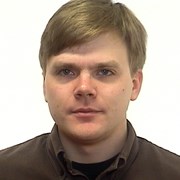Open workshop on Virtual Inertia from HVDC Converters in future power systems
28 April 2022
Background
In central Europe, an increasing share of wind and PV generation is leading to periods with fewer synchronous generators in operation, and the resulting low equivalent rotating inertia in the grid can introduce stability problems. Scenarios with low inertia, leading to challenges with frequency control and grid stability, are already requiring attention in the transmission networks in UK and Ireland. In the Nordic countries of Europe, low equivalent inertia is expected to produce potential issues within 2025.
Different control schemes have been proposed for providing virtual inertia from power electronic converters distributed generation and other low voltage applications. Especially HVDC converters may represent an effective solution for alleviating issues caused by decreasing rotating inertia due to the significant installed power rating. However, identification of the most suitable implementation methods for HVDC converters with different topologies is still an open issue.
This project will develop methods for assessing the value of and the requirements for inertia emulation from HVDC transmission schemes. Furthermore, control strategies suitable for inertia emulation by HVDC converter stations with different power converter topologies will be investigated, and their performance and stability characteristics will be analysed. Detailed models of HVDC transmission schemes with inertia emulation capability will also be developed for analysing the influence on the stability of large-scale power systems. The methods and techniques resulting from the research activities within the project will support the development of "smarter transmission systems" in a future context with limited physical inertia from traditional generation plants.
Project partners:
- Statnett
- Statoil
- RTE
- Elia
- NTNU
- Central de Lille
- L2EP – Centrale Lille
- KU Leuven
This is a Knowledge-building project for Industry (KPN) partially financed by the Research Council of Norway under the ENERGIX programme.

